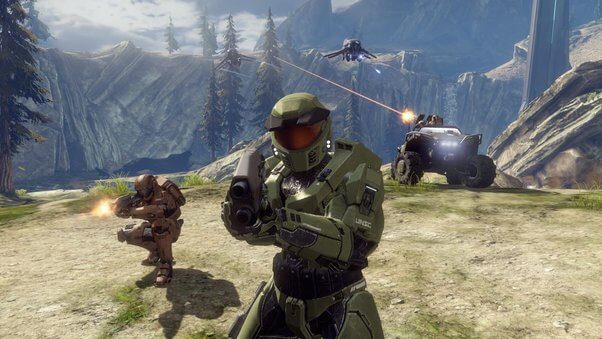Introduction:
In the pantheon of video game icons, few hold the status and reverence as Master Chief, the protagonist of the groundbreaking first-person shooter franchise, “Halo.” Released in 2001 by Bungie Studios for the Xbox console, “Halo: Combat Evolved” revolutionized the gaming industry and introduced players to a rich universe filled with epic battles, compelling characters, and innovative gameplay. One of the enduring symbols of the Halo franchise is its iconic banners, which have become synonymous with the game’s identity and legacy.
The Birth of an Icon:
The Halo series’ iconic banners emerged from the game’s inception, with the original box art featuring the imposing visage of Master Chief, illuminated by the iconic Halo ring. This imagery encapsulated the game’s essence – a lone warrior facing insurmountable odds in an enigmatic and visually striking world. The banner’s minimalist yet powerful design captured the imagination of gamers worldwide and set the tone for the franchise’s visual identity.
As the series progressed, so too did the evolution of its banners. Each subsequent installment introduced new elements and themes, reflecting the evolving narrative and gameplay mechanics. From the verdant landscapes of Halo: Combat Evolved to the desolate vistas of Halo 3: ODST, each banner served as a window into the game’s universe, enticing players to embark on epic journeys across alien worlds.
Iconic Imagery:
At the heart of Halo’s banners lies a visual language that resonates with fans on a profound level. The sight of Master Chief, clad in his iconic MJOLNIR armor, evokes a sense of heroism and resilience. The looming presence of the Halo ring symbolizes the grandeur and mystery of the universe, while the Covenant’s ominous ships remind players of the ever-present threat lurking in the shadows.
Also Read: Exploring Sven Co-op Game Icons and Banners: An Immersive Journey
Moreover, the banners serve as a testament to the craftsmanship and artistry of the designers behind the Halo franchise. Each image is meticulously crafted to evoke specific emotions and themes, whether it be the awe-inspiring scale of a Forerunner structure or the intensity of a pitched firefight. The attention to detail and commitment to excellence shine through in every pixel, elevating the banners from mere promotional material to iconic works of art.
Cultural Impact:
Beyond their role as marketing assets, Halo’s banners have transcended the realm of video games to become cultural touchstones in their own right. The sight of Master Chief silhouetted against the backdrop of a Halo ring is instantly recognizable to gamers and non-gamers alike, symbolizing the enduring popularity and influence of the franchise.
Moreover, the banners have inspired a legion of fan art, cosplay, and merchandise, further cementing their status as iconic symbols of gaming culture. Whether emblazoned on t-shirts, posters, or tattoos, the imagery of Halo’s banners serves as a rallying cry for fans old and new, uniting them under a common banner of shared experiences and memories.
Conclusion:
In the annals of gaming history, few franchises have left as indelible a mark as Halo. At the heart of its enduring legacy lies a series of iconic banners that have come to define the franchise’s visual identity and cultural impact. From the humble beginnings of Halo: Combat Evolved to the sprawling epics of Halo 5: Guardians, these banners have served as beacons of inspiration and wonder, guiding players on unforgettable journeys across the stars. As the Halo saga continues to unfold, one thing remains certain – its banners will forever stand as symbols of gaming greatness.

